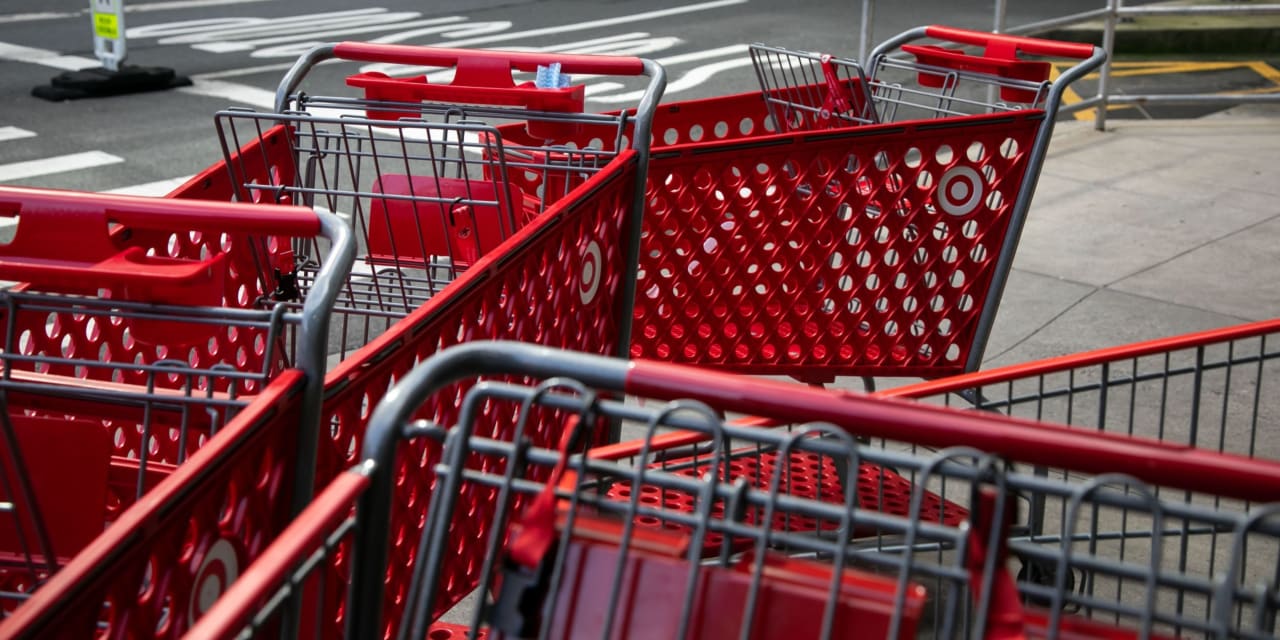Target
garnered national attention last week when it said it would close stores in four major cities, citing rising problems with theft and violent crime. But while such moves make it clear that the retail industry is struggling with a theft problem, it’s surprisingly hard to get concrete picture of just how big that problem is.
Following the pandemic, there has been a jump in activity from organized retail crime, ranging from local groups to international criminal organizations, said Cory Lowe, senior research scientist at the Loss Prevention Research Council, which provides services to retailers. At the same time, the rise of e-commerce has made it easier to resell stolen goods.
Theft has becomes a hot button for retailers, with more than a dozen raising the topic during the latest bout of earnings reports and many calling out an uptick in organized retail crime. Their concerns have been amplified by videos of smash-and-grab incidents that have gone viral. One recent example, which saw a mob of masked people looting stores across Philadelphia, coincided with the day Target (ticker: TGT) announced that it would close nine stores in New York City, Seattle, San Francisco, and Portland.
Retailers are also reporting a surge in violent crime, with nearly 90% of respondents saying shoplifters were “somewhat more” or “much more” aggressive and violent than a year ago, according to a recent survey from the National Retail Federation. At Target, theft incidents involving violence or threats of violence were up 120% year-over-year in the first five months of 2023, the company’s management team said in August.
For Target, shrink is one, if not the only, factor that’s dragged the stock down by 28% this year. The company is also struggling with widespread discounting, eroding market share, and slowing consumer demand. (A spokesman for Target declined to comment for this article.)
Industrywide, it’s difficult to get a full picture of the scope of retail crime. Currently, the leading indicator is the NRF’s and the LPRC’s annual security survey, which measures the average shrink rate across all retailers. In 2022, the shrink rate increased to 1.6%, up from 1.4% in 2021, just slightly above the five-year average of 1.5%. Lowe argues that 0.2 percentage points is a “pretty staggering increase” when viewed in financial terms, amounting to about $18 billion in losses, according to the latest survey.
But even the NRF’s shrink metrics fail to fully capture the issue. The LPRC’s average shrink rate is derived from retailers’ self-reported estimates. That carries some methodological problems, Lowe said, because not every retailer calculates their shrink rate in the same way. The participants also vary year to year, he said.
Using government-provided data doesn’t create a much more detailed picture. States define theft-related crimes differently, have different thresholds for prosecution, and report crime statistics separately. New York City, for instance, provides weekly data on robbery, burglary, grand larceny, and petit larceny—but doesn’t have a separate category for shoplifting or other retail-related theft crimes.
Local crime statistics can, however, help fill in the big picture of how theft levels have evolved in recent years. A quick sweep of statistics from the cities where Target is closing stores shows that while theft related crimes increased in 2022, they have since started to trend down in some cities. In Manhattan’s 25th Precinct, where Target is closing a store, grand larceny is up 49.1% compared to two years ago, but down 12.5% year-over-year so far in 2023. Larceny theft in San Francisco rose by 14.1% in 2022, but has fallen 7.9% year-over-year so far this year.
It’s worth noting that some stores face bigger problems with theft than others within the same city, depending on neighborhood, law enforcement presence, security systems, store layout and other factors. Since companies are constantly evaluating whether a store is successful enough to keep open, issues with shrink could ultimately be the thing that tilts the needle, Lowe said.
Problems with theft can have several knock-on effects for retailers. Theft-heavy environments make it hard to attract and retain employees, says Brian Yarbrough, an analyst at Edward Jones. Meanwhile, theft mitigation strategies, such as locking up products, adds more friction to the buying process and could alienate consumers.
And of course, lost merchandise hurts companies’ bottom lines. Target said in May that shrink would reduce full-year profitability by more than $500 million compared with last year. Many companies try to raise prices at problem locations in a bid to cover rising costs, Yarbrough says, which could be another bump in the road for companies that, such as Target, are already battling a challenging macroeconomic environment.
“You don’t want to get to an environment where you’re having to raise prices to offset these headwinds and your competition isn’t,” Yarbrough said. “It then becomes a bigger headwind.”
As part of the Tuesday announcement about the store closures, Target said it has been advocating for the passage of the Combating Organized Retail Crime Act and the INFORM Consumers Act in Congress. The former would create a task force of federal agencies to crack down on theft and organized retail crime, while the latter would give online marketplaces—such as Amazon—a larger role in curbing the sale of stolen goods. The company also said it’s been working to create organized retail crime task forces at the state level.
John Tomlinson, global director of research at M Science, says the company’s decision to explicitly blame the store closures on crime may also have been intended as a message for lawmakers.
“I think there’s some symbolism there,” he said. “Signaling that they would need some support from government authorities to help curb this issue.”
Write to Sabrina Escobar at [email protected]
Read the full article here













